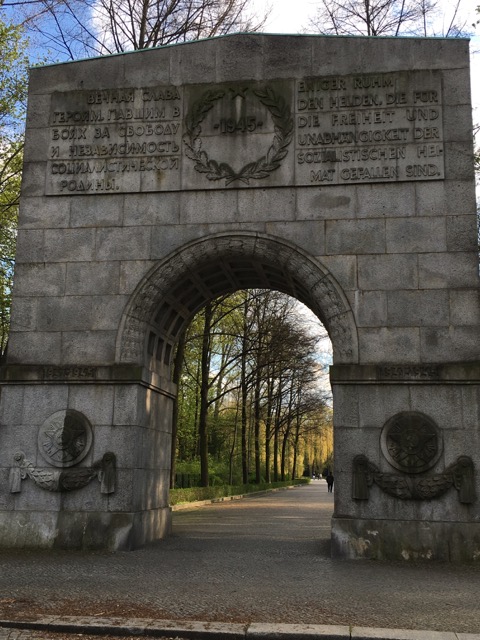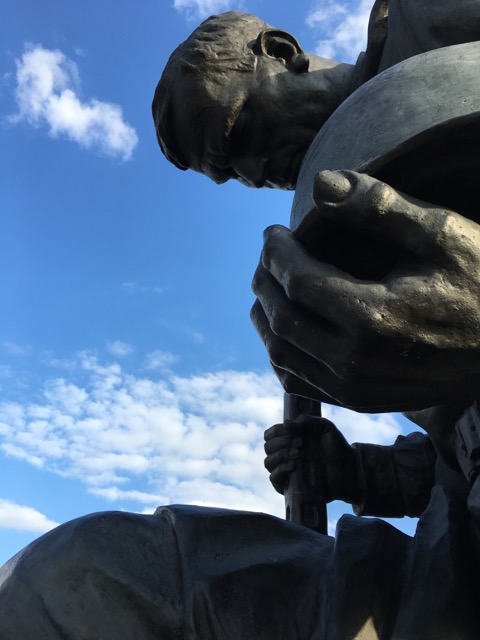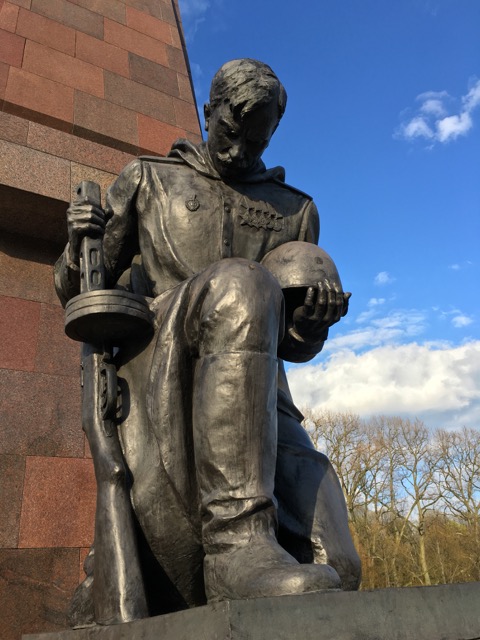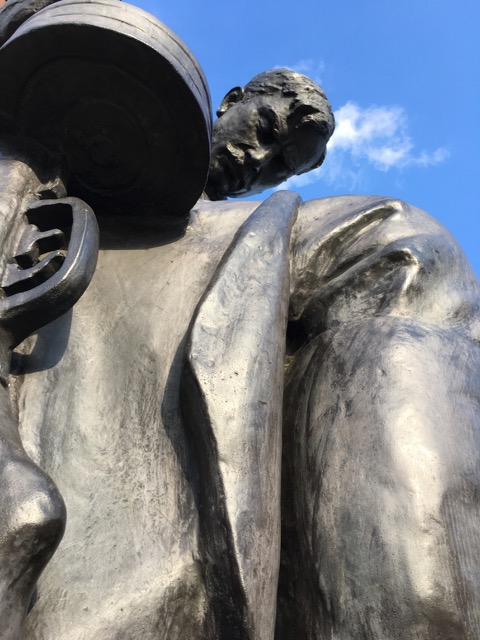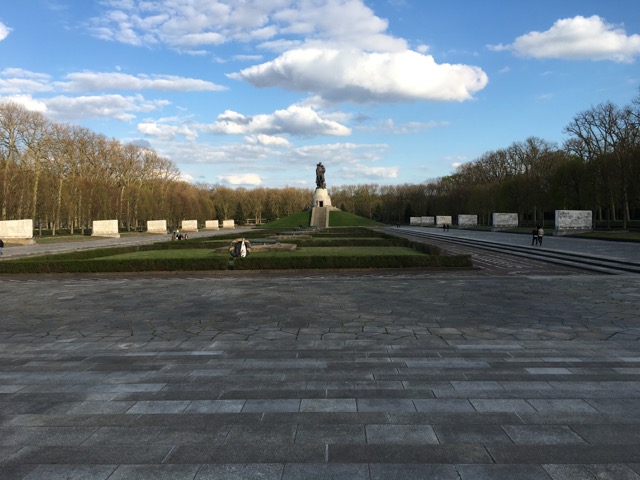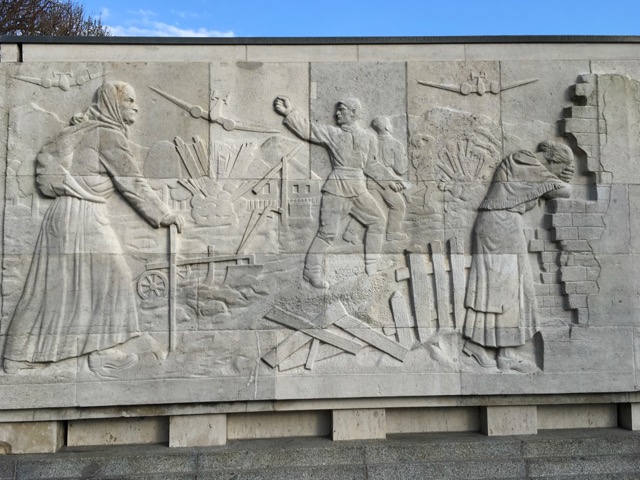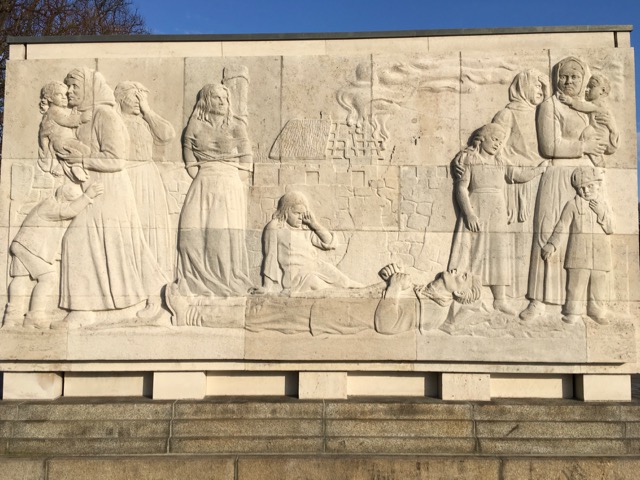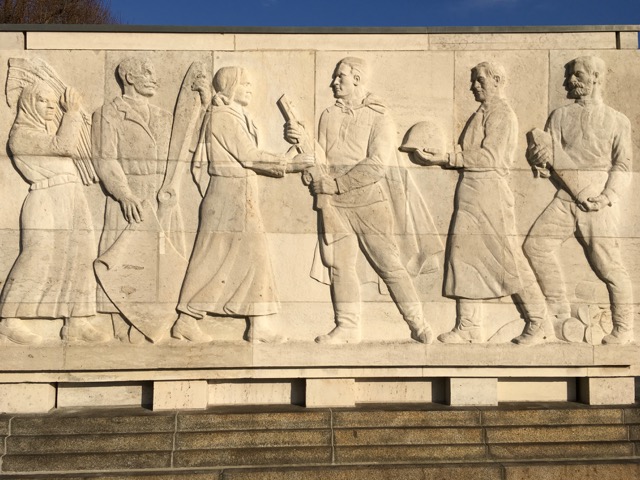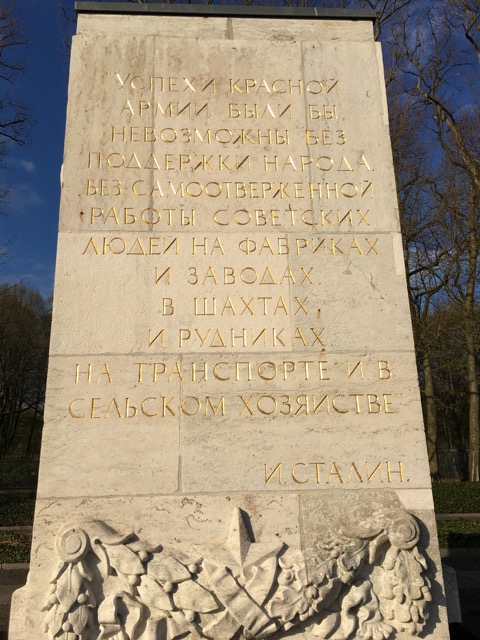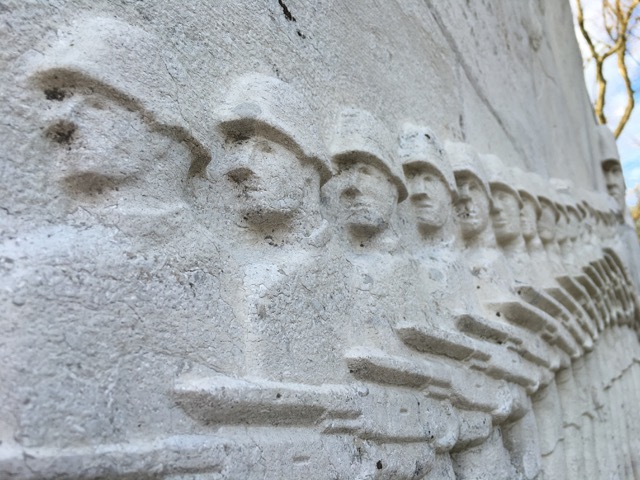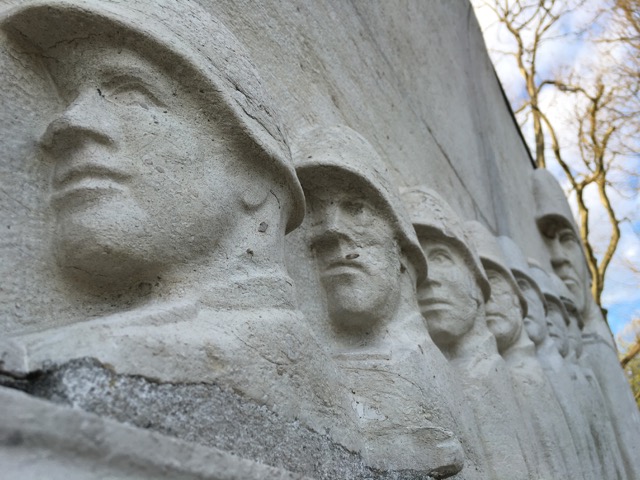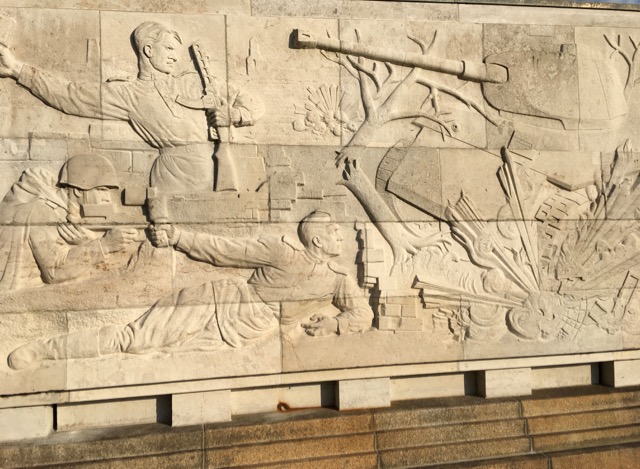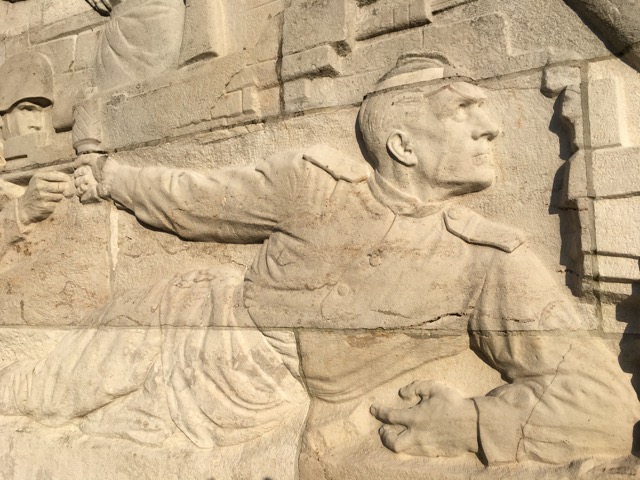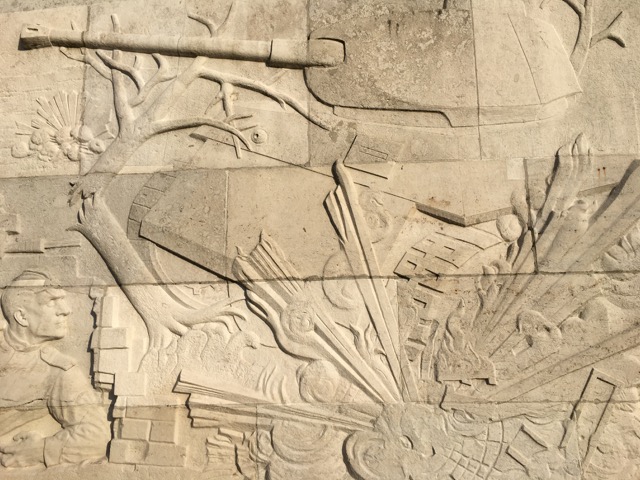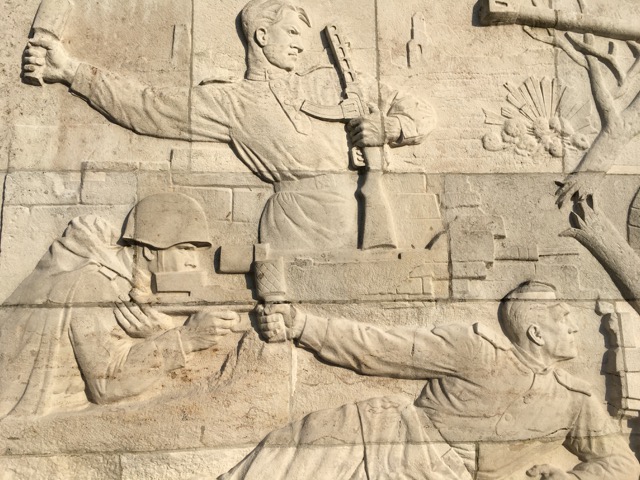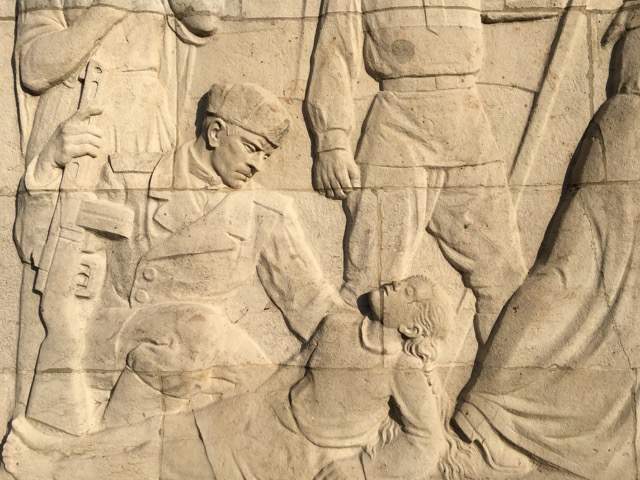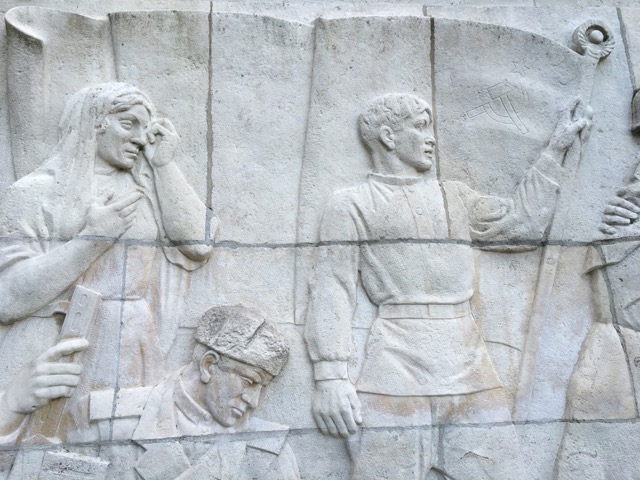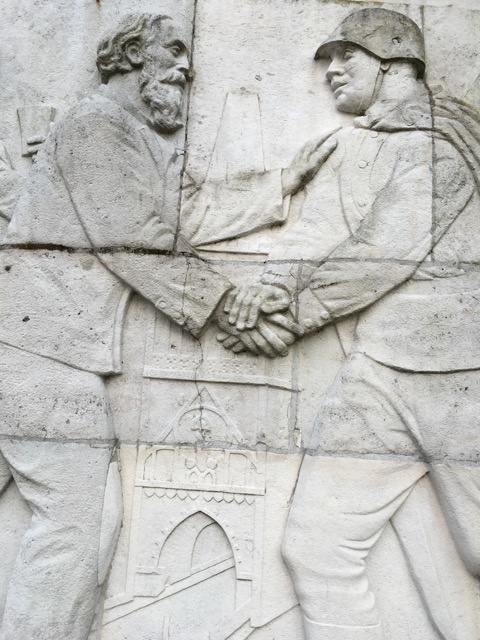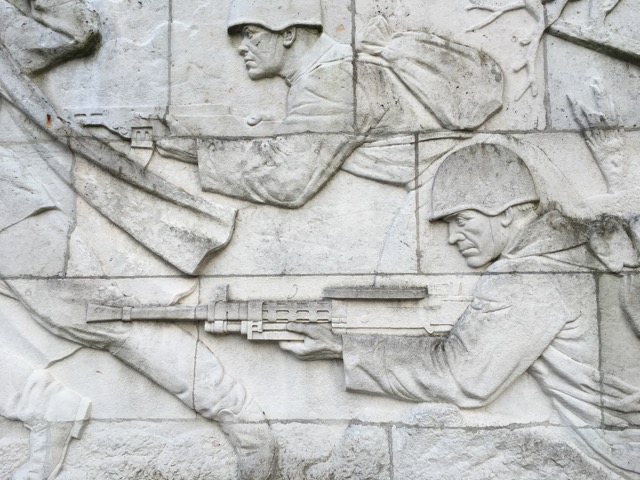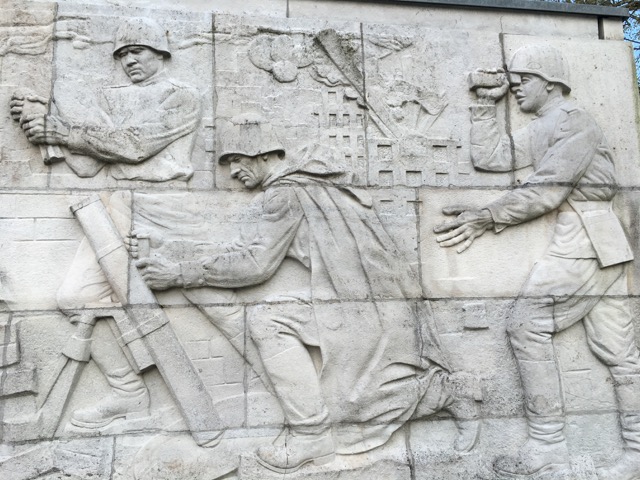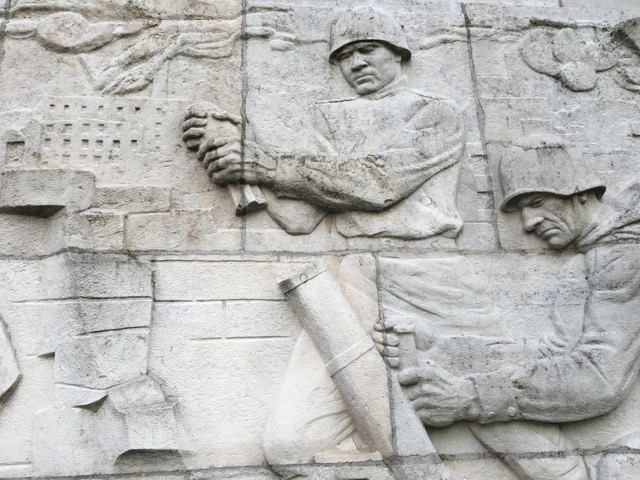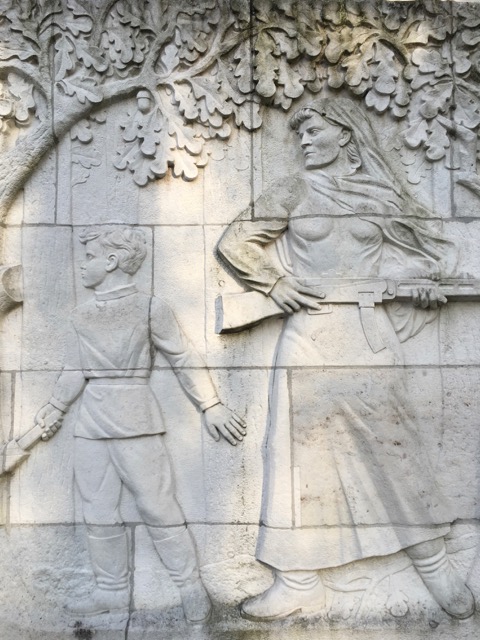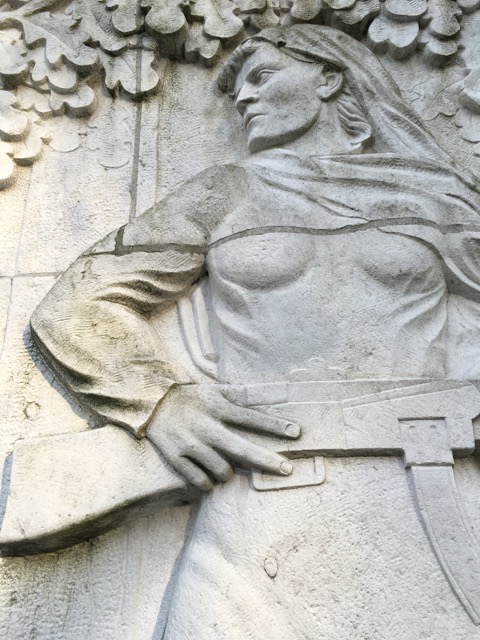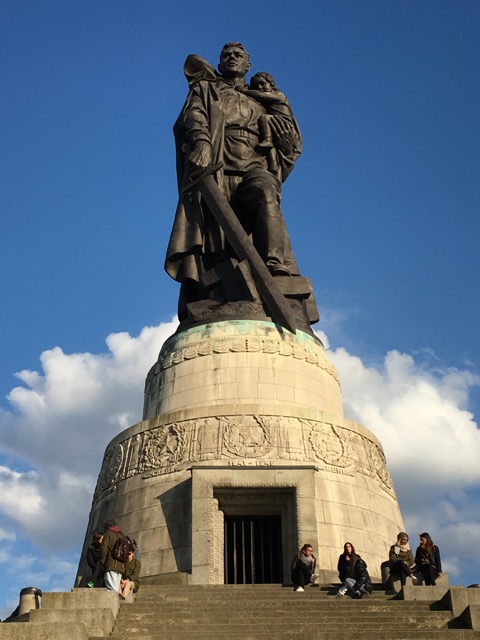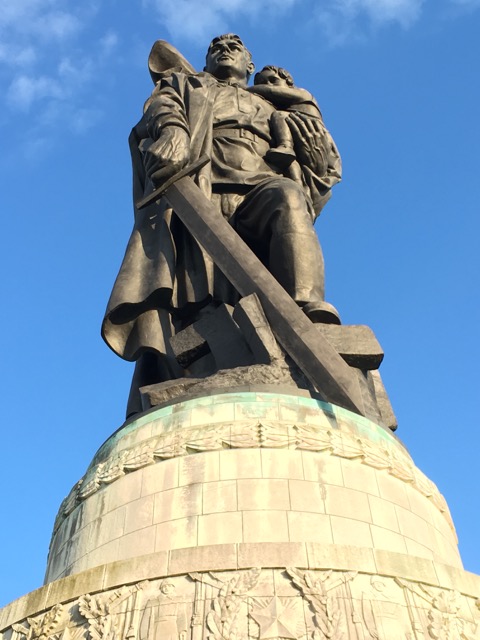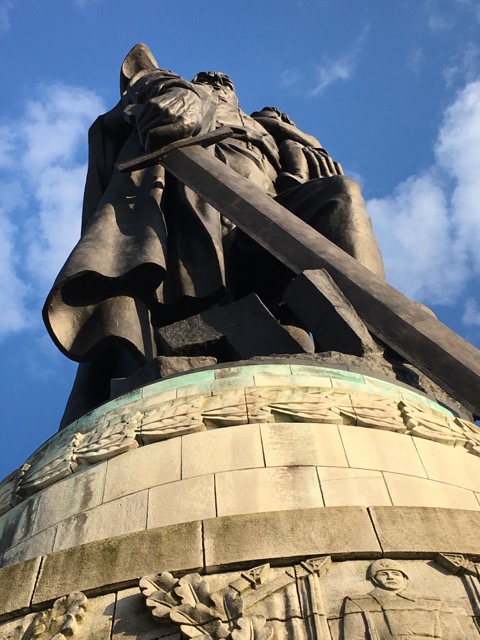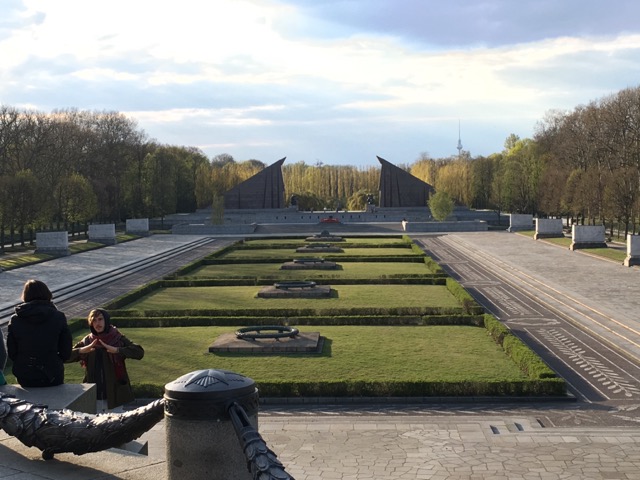Treptower Park is a massive monument to the Soviet conquest of Berlin. Eighty thousand Red Army soldiers died in the battle for Berlin, some 5,000 of whom are buried on the site. The Soviet Union was known for its grandiose monuments. A victorious end to the fighting on the most barbaric front in the most barbaric conflagration in history was a really good reason to leave a large narrative imprint in Berlin. This monument, capped by a 12-meter tall statue of a soldier standing atop a smashed swastika holding a child, does that and more.
On either side of the promenade leading up to the statue is a row of 8 stone sarcophagi. Each sarcophagus has 2 bas reliefs, one on each of the long sides. The reliefs on both sides are identical, except that the text on each of the units (all credited to J. Stalin, natch) is in Russian on the left side, German on the right.
One of these caught my eye in particular.
Earlier in the day, I had been looking at WWII-era Nazi propaganda in which commissars (the political officers attached to all units of the Soviet Army) were portrayed stereotypically as Jews. Despite the frequent interchangeability of "Russia" with the "The Soviet Union" in American syntax, the USSR was a fantastically multicultural empire atop of which sat a dictator who wasn't even Russian.
And yet, the soldiers depicted here all look very very proto-Russian. I might have expected to see at least one guy looking a little Jewish and another one looking a little bit Asian. You'll pardon the pun, but it seems the artist has whitewashed the composite makeup of the conquering army a bit.
This wasn't a surprise, just one of those rare moments (for me at least) where art history kind of smacks you in the face and you understand something. Stalin spent the better part of the late '20s and 1930 purging the Soviet leadership and bureaucracy of Jews and non-Russians, and replaced his Jewish Foreign Minister (Maxim Litvinov) in 1939 as a signal to Nazi Germany that he was ready to deal. Of course the art that the USSR left in Berlin to remind the Germans that they got their asses kicked reflected Soviet racial and ethnic nonsense. I just didn't expect to find such good irony. There's some fairly evil chutzpah wrapped up in this.
For the record, I'd infer that the kneeling soldier is overcome with emotion, but it was neither clear to Jonathan or to me why he's drying his eyes on the drapes.

